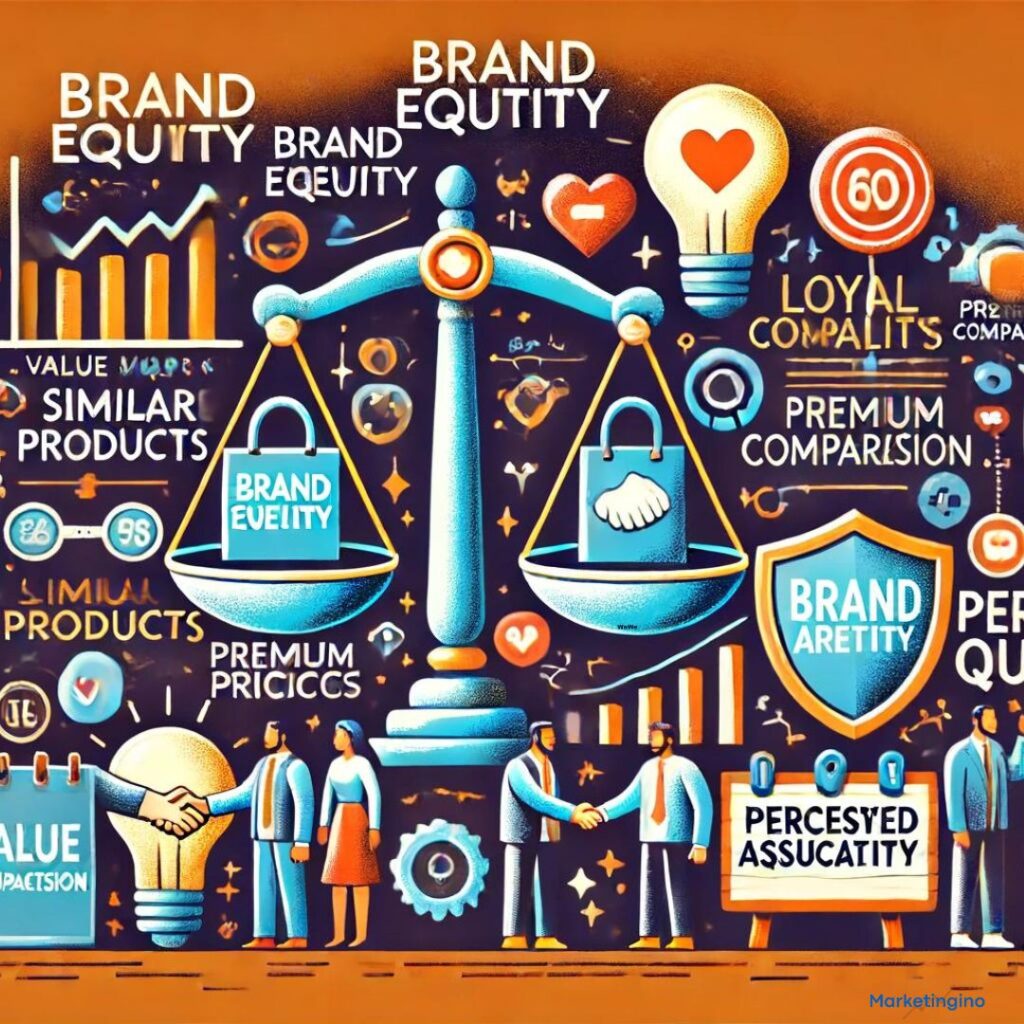Brand equity is a critical concept in marketing and business strategy. It represents the value that consumers attribute to a brand’s offerings compared to similar products from other brands. This value is not just about the tangible aspects of a product, but also encompasses the emotional and psychological associations consumers have with the brand. Strong brand equity can lead to customer loyalty, premium pricing, and competitive advantage. This article explores the components of brand equity, its importance, how it is measured, and strategies to build and maintain it.
Components of Brand Equity
- Brand Awareness: The foundation of brand equity is awareness. Consumers must first know a brand exists before they can develop any positive associations with it. High brand awareness ensures that the brand is top-of-mind when consumers are considering purchasing a product.
- Brand Associations: These are the attributes, qualities, and emotions that consumers connect with a brand. Positive associations can be driven by effective marketing, quality products, and customer experiences.
- Perceived Quality: This refers to the consumer’s perception of the overall quality and reliability of a brand’s products or services. Perceived quality can significantly influence purchasing decisions and brand preference.
- Brand Loyalty: Loyal customers are those who consistently choose a specific brand over others. Brand loyalty reduces the likelihood of switching to competitors and encourages repeat purchases.
- Proprietary Brand Assets: These include patents, trademarks, and channel relationships that contribute to a brand’s market position and offer competitive protection.
The Importance of Brand Equity
- Customer Loyalty: Strong brand equity fosters customer loyalty, leading to repeat purchases and long-term customer relationships. Loyal customers are less price-sensitive and more likely to recommend the brand to others.
- Premium Pricing: Brands with high equity can often command higher prices for their products. Consumers are willing to pay a premium for brands they perceive as offering superior value or quality.
- Market Differentiation: Brand equity helps differentiate a brand from its competitors. Unique brand attributes and strong associations can make a brand stand out in a crowded marketplace.
- Enhanced Market Share: Positive brand equity can lead to increased market share. As more consumers prefer and choose the brand, its presence in the market grows.
- Financial Performance: Brands with high equity often experience better financial performance. This includes higher revenues, profitability, and shareholder value.
Measuring Brand Equity
- Brand Valuation: This involves estimating the financial value of a brand. Various models, such as the Interbrand model, calculate brand value based on factors like financial performance, brand strength, and the role of the brand in purchasing decisions.
- Customer-Based Brand Equity (CBBE) Model: Developed by Kevin Lane Keller, this model focuses on consumer perceptions. It assesses brand equity through brand knowledge, comprising brand awareness and brand image.
- Net Promoter Score (NPS): NPS measures customer loyalty and satisfaction by asking customers how likely they are to recommend the brand to others. A high NPS indicates strong brand equity.
- Brand Equity Index: This index combines multiple indicators, such as market share, price premium, and customer loyalty, to provide a comprehensive measure of brand equity.
- Surveys and Focus Groups: Direct feedback from consumers through surveys and focus groups can provide insights into their perceptions, attitudes, and associations with the brand.
Strategies to Build and Maintain Brand Equity
- Consistent Brand Messaging: Ensure that all communications and marketing efforts consistently reflect the brand’s values, mission, and unique selling propositions. Consistency helps reinforce brand identity and trust.
- High-Quality Products and Services: Continuously delivering high-quality products or services is crucial for maintaining positive perceptions and brand loyalty.
- Customer Engagement: Engage with customers through various channels, such as social media, email, and customer service. Building a strong relationship with customers enhances their emotional connection to the brand.
- Innovative Marketing Campaigns: Creative and memorable marketing campaigns can boost brand awareness and create positive associations. Use storytelling and emotional appeal to connect with consumers.
- Leveraging Customer Feedback: Actively seek and act on customer feedback to improve products and services. Showing that the brand values customer input can strengthen loyalty and trust.
- Corporate Social Responsibility (CSR): Engage in socially responsible activities and communicate these efforts to consumers. CSR initiatives can enhance brand reputation and create positive associations.
Brand equity is a multifaceted concept that encompasses the value consumers attribute to a brand compared to its competitors. Strong brand equity can lead to customer loyalty, premium pricing, market differentiation, and improved financial performance. By understanding and measuring brand equity, and implementing strategies to build and maintain it, businesses can create lasting value and a competitive edge in the marketplace.


